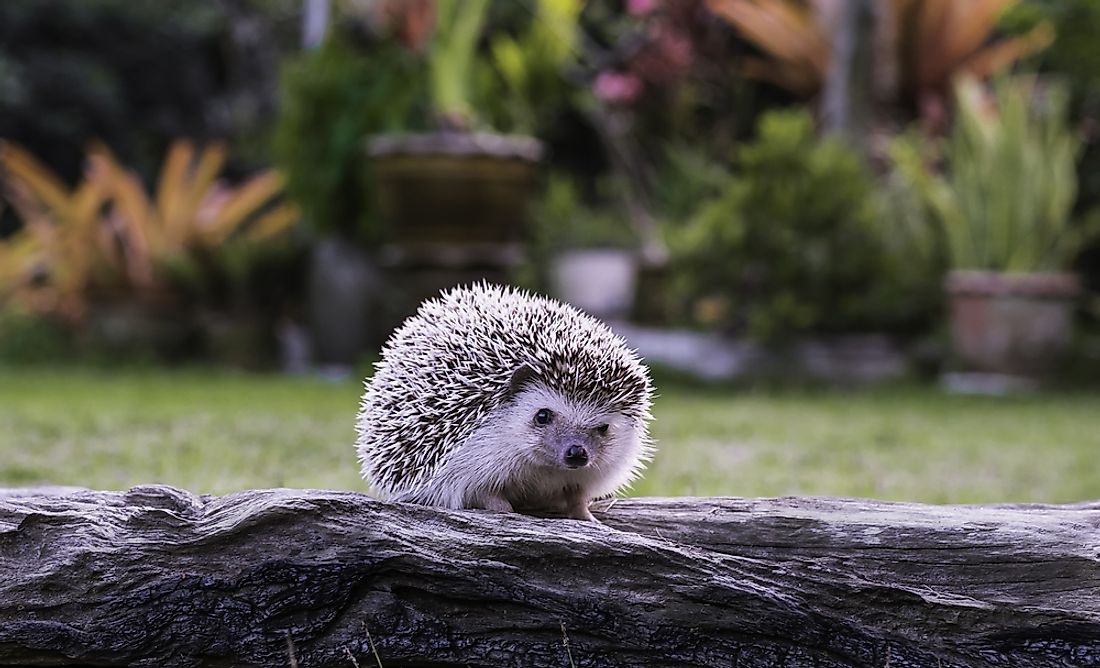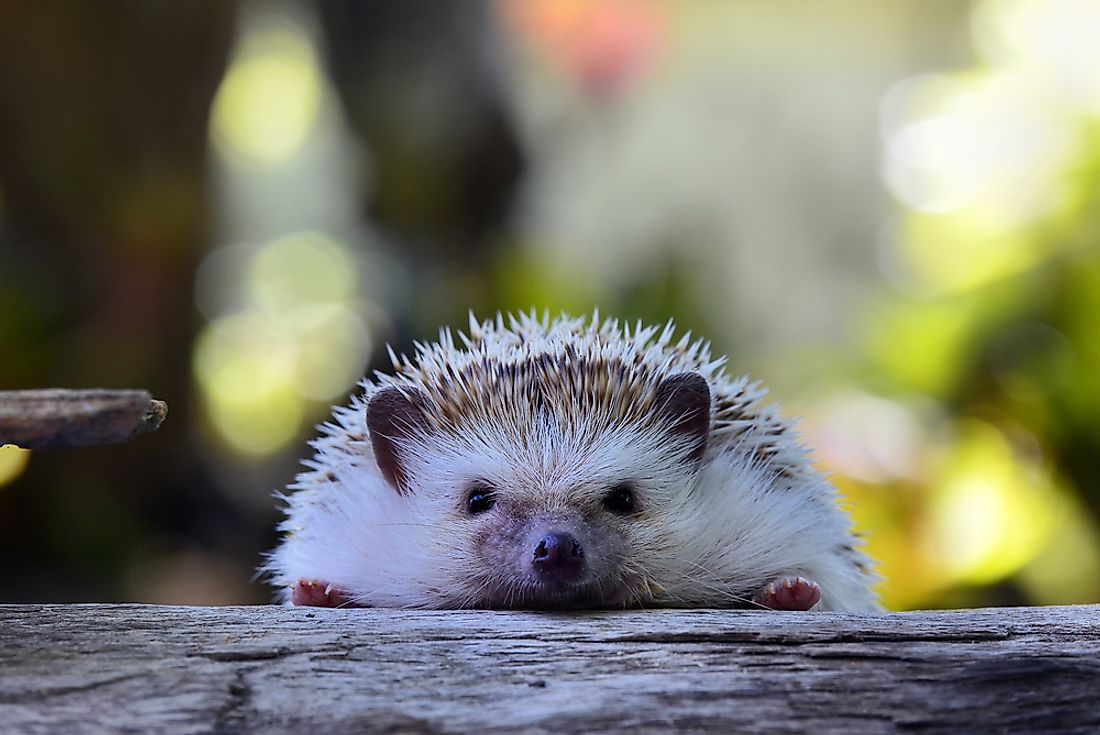Hedgehog Facts - Animals of the World

The hedgehog is a unique species that has captured the attention of human beings for many years The mammal has a long history of interaction with humans and has been exploited and used as a pet, medicine, and food for some communities. There are seventeen different hedgehog species grouped into five genera namely Atelerix, Erinaceus, Hemiechinus, Mesechinus, and Paraechinus. The hedgehog has been the subject of scientific research.
4. Physical Description

The hedgehog is a small rodent-like mammal with a close resemblance to the porcupine. The hedgehog’s upper body is covered in spikes similar to those of the porcupine though they are more firmly attached to the body. The spikes are made up of keratin. The underside, head, and legs are covered with soft fur. The hedgehog has a conical face with a thin snout and black beady eyes. Within the mouth, the hedgehog has up to 44 teeth. The legs are short, but the hind legs are longer than the forelegs. Different species of the hedgehog grow to various lengths ranging between 5 and 14 inches with a weight of between 150 and 1584 grams.
3. Diet

The hedgehog is an omnivorous mammal whose diet is primarily composed of insects, snails, snakes, frogs, grass roots, vegetation, berries, toads, bird eggs, and other reptile species. Due to their poor eyesight, hedgehogs forage for food using their sense of hearing and their heightened sense of smell. Feeding habits of hedgehogs are poor, making them prone to heart diseases as they consume a lot of fat and sugar which is not fully utilized due to a low metabolism.
2. Habitat and Range

The hedgehog is found in parts of Europe, Asia, and Africa where they are native. They have also been introduced to New Zealand and Australia. The hedgehog is highly adapted to a variety of habitats including forests, deserts, scrublands, savannahs, and suburban areas. In their habitats, hedgehogs build nests from twigs, leaves and other vegetative materials. They sometimes also occupy burrows left by other animals. Alternatively, hedgehogs burrow their holes or occupy rock crevices. Due to increased domestication of the hedgehog, species may be found in other regions of the world where they are kept as pets. The IUCN describes the hedgehog as a least concern species due to its relatively high population. However, the hedgehog has several predators including owls, mongoose, wolves, ferrets, badgers and foxes. There are no natural predators in areas where they have been introduced.
1. Behavior

The hedgehog is a solitary and nocturnal mammal. Most hedgehog species forage during the night to avoid predators, although daytime activity has also been recorded. Hedgehogs have a unique defense system where they roll into a ball and keep still in the face of danger. In this way, their spikes discourage the predator while at the same time protecting the softer head, legs, and the belly. Some desert species, however, attack the intruder and will only ball as a last resort. Though hedgehogs may release their spikes when attacked, the spikes are not poisonous like those of the porcupine. When they find a new scent, hedgehogs bite and lick the source then smear the froth on their spikes probably as a camouflage technique to keep them from being noticed by predators. In extreme environments such as deserts and cold areas or during drought, hedgehogs hibernate or aestivate to cope with the situation.











